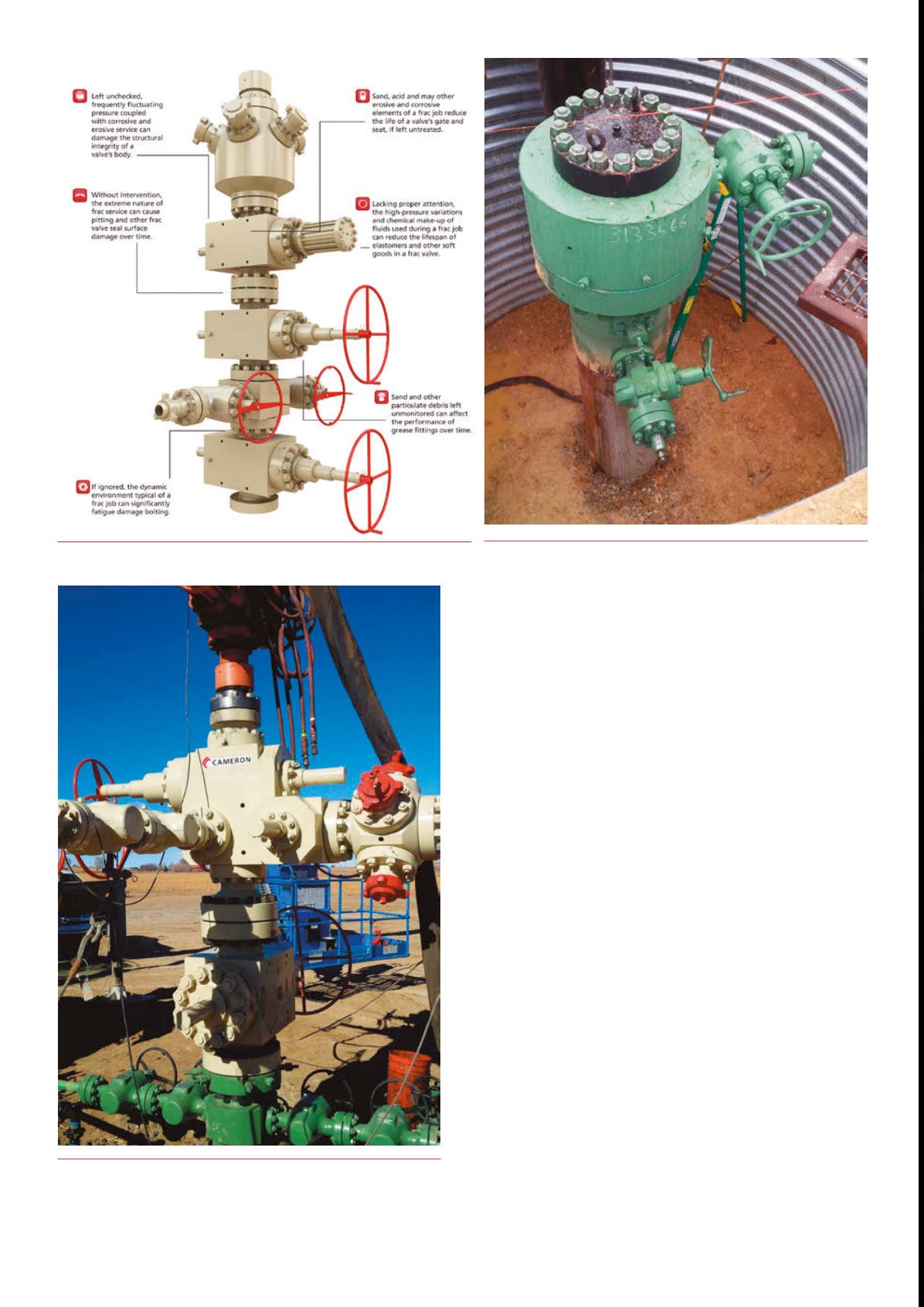
62 |
Oilfield Technology
June
2015
on amultiwell pad and are completing over 50 stages per well; or over
200 stages per multiwell pad.
Meanwhile, demand is rising as operators push lateral lengths,
the number of frack stages, and drill wells more closely together, while
greatly increasing proppant and frack fluid volumes. Operators in some
shale plays are injecting the equivalent of two trainloads of sand (more
than 200 hopper cars) into each four‑well pad. Doing all of this requires
sustained use of pressure pumping equipment at high performance
thresholds, prompting faster wear and tear on frack service equipment.
One of the standard responses to these conditions has been to put
more fluid throughmore lines. But, that only adds to an already tangled
maze of lines on the well pad. One answer is the Monoline™ frack fluid
delivery system. This system replaces the need to rig‑up four separate
flow lines to the frack tree with a single line featuring a large inner
diameter bore to accommodate the large frack fluid volumes required in
today’s hydraulic fracturing programmes.
The single‑line frack fluid delivery systemadheres to API standards
and uses bolted connections to promote a higher level of system
integrity and safety. The systemuses a series of 5 in. inner diameter
high‑pressure pipe segments that are bolted together with 90˚ elbows
and swivel flanges. This configuration allows the full range needed
for alignment between the frack tree and the frackmanifold. It also
eliminates the potential tomismatch equipment and simplifies the
rig‑up procedure. Installation time is reduced by more than 60%over
conventional frack‑iron piping systems.
During field application in the Eagle Ford Shale, this systemwas
shown to reduce potential leak paths, eliminatemismatched connections,
remove temporary pipework, and resist erosion during a 23 frack stages
per leg operation. The operator saved over 15 hours in installation time
and 84man‑hours needed to install typical frack‑iron pipework.
In a Canadian application, the Monoline frack fluid delivery
systemwas also shown to improve operational efficiencies during an
Figure 3.
An example of advancesmade in the area of wellhead
reliability and functionality for unconventionals is Cameron’s advanced
multi‑bowl nesteddiverter snap ring (MN‑DS) wellhead system.
Figure 4.
The F‑T90 is engineered 50%smaller and 25% lighter than
conventional frack treeswhile preserving the rigorous durability and
reliability requiredby the industry.
Figure 2.
Frack tree failuremechanisms.


